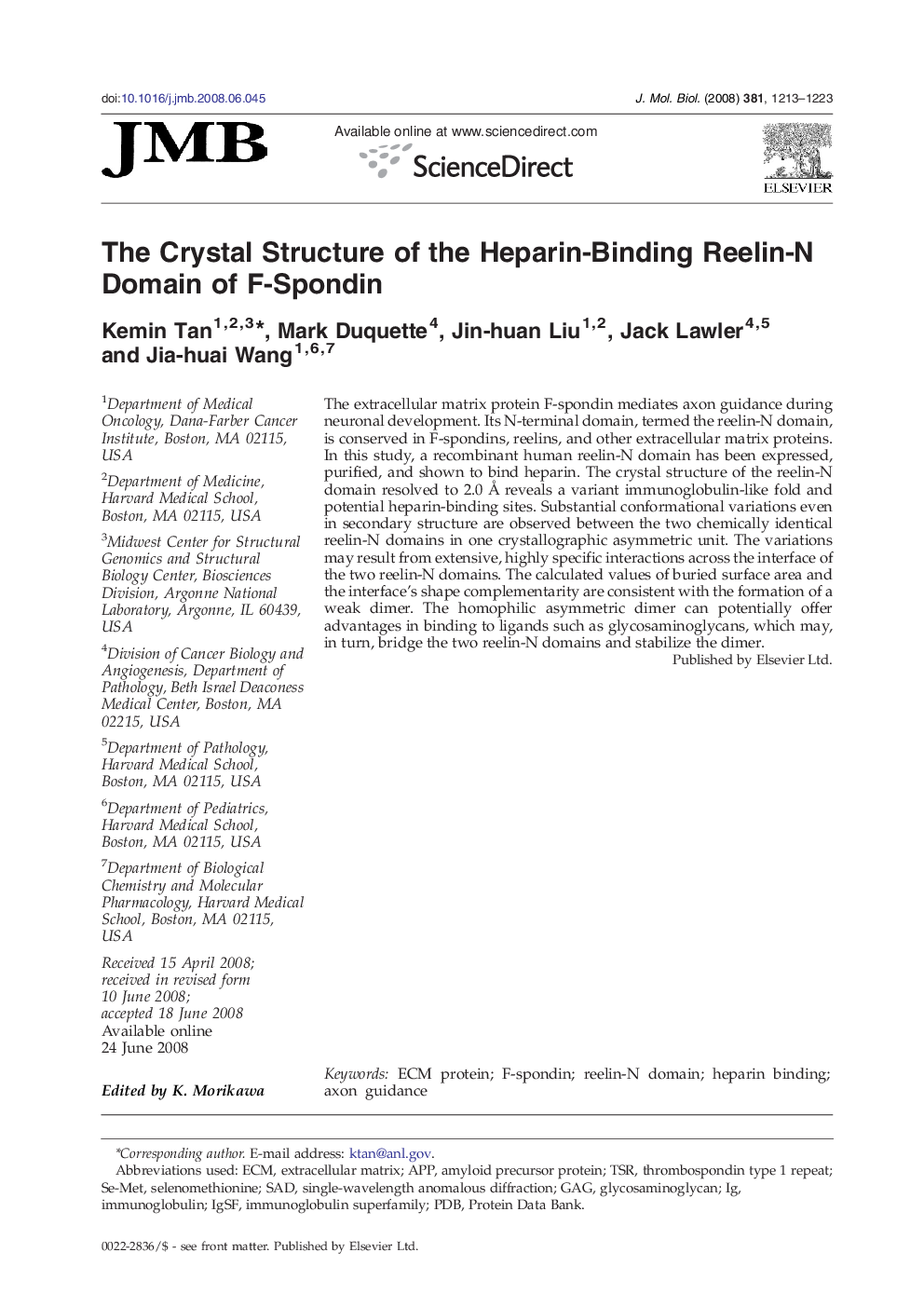| Article ID | Journal | Published Year | Pages | File Type |
|---|---|---|---|---|
| 2187289 | Journal of Molecular Biology | 2008 | 11 Pages |
The extracellular matrix protein F-spondin mediates axon guidance during neuronal development. Its N-terminal domain, termed the reelin-N domain, is conserved in F-spondins, reelins, and other extracellular matrix proteins. In this study, a recombinant human reelin-N domain has been expressed, purified, and shown to bind heparin. The crystal structure of the reelin-N domain resolved to 2.0 Å reveals a variant immunoglobulin-like fold and potential heparin-binding sites. Substantial conformational variations even in secondary structure are observed between the two chemically identical reelin-N domains in one crystallographic asymmetric unit. The variations may result from extensive, highly specific interactions across the interface of the two reelin-N domains. The calculated values of buried surface area and the interface's shape complementarity are consistent with the formation of a weak dimer. The homophilic asymmetric dimer can potentially offer advantages in binding to ligands such as glycosaminoglycans, which may, in turn, bridge the two reelin-N domains and stabilize the dimer.
